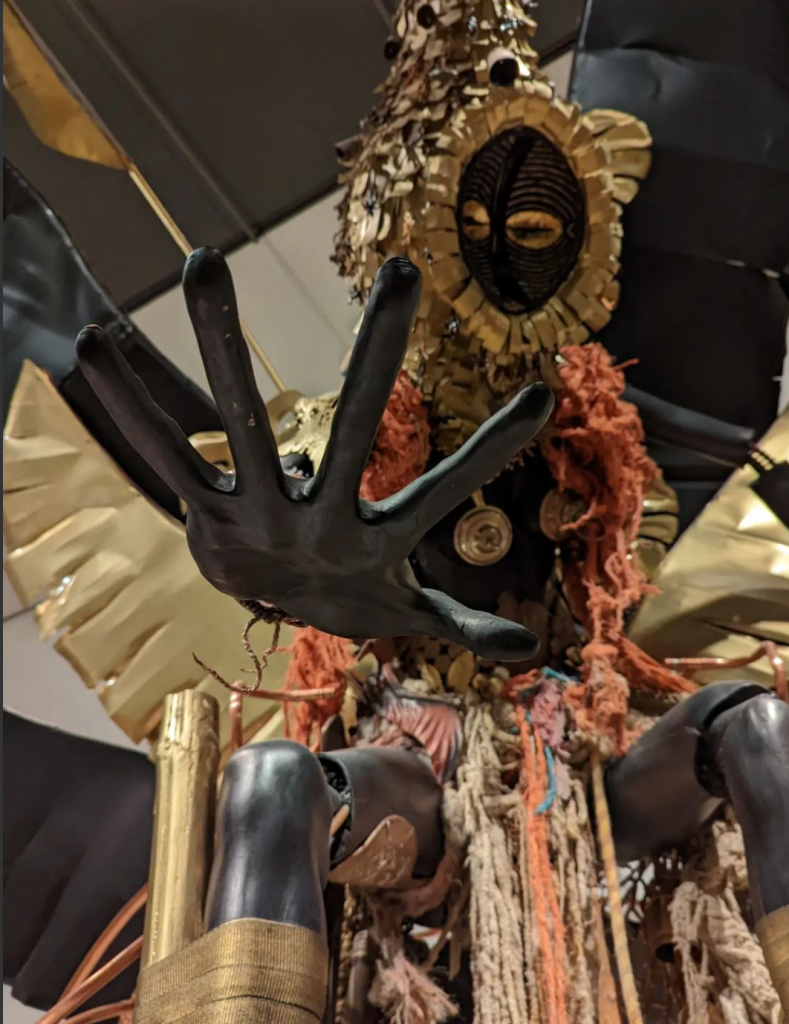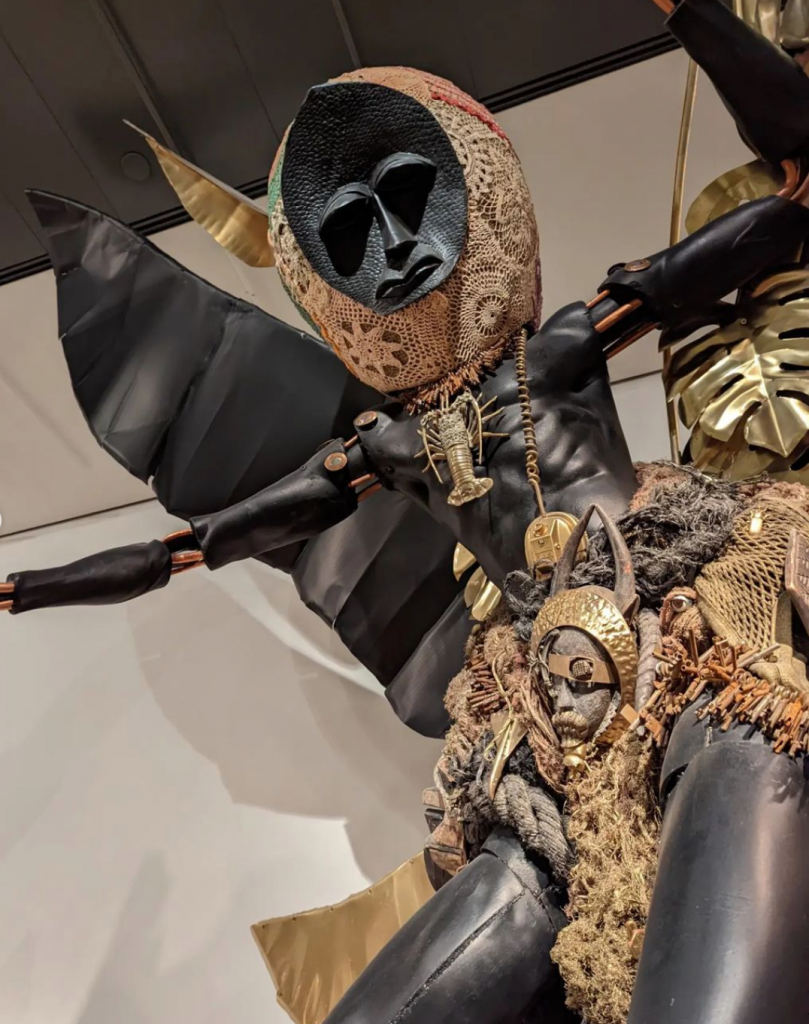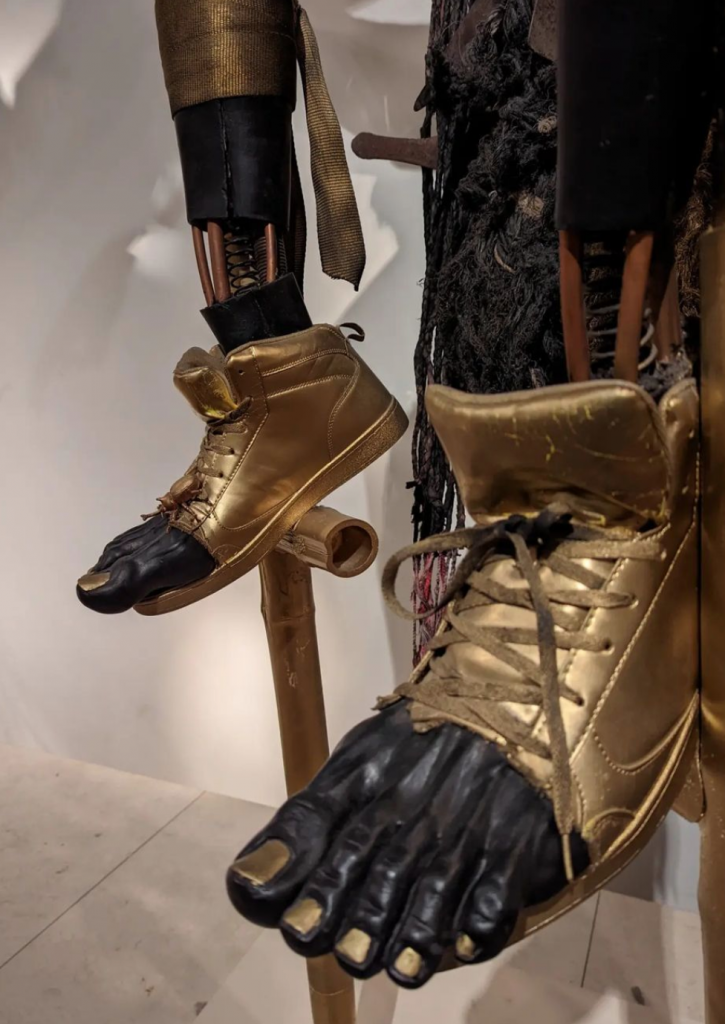Zak Ové is British Trinidadian artist that creates sculpture, painting, film and photography that draws on his upbringing in London and Trinidad. His work is informed by the history and lore carried through the African diaspora to the Caribbean, Britain and beyond with particular focus on traditions of masking and masquerade as a tool of self-emancipation. Ové’s artworks explore the interplay between old world mythology and what he posits as ‘potential futures’, a space where he reinterprets existence into the fantastical. His work is a celebration of the power of play, the spirit of imagination in the blurring of edges between reality and possibility, flesh and spirit. In this way, Ové seeks to re-write a history for the future through heralding the past in a new light.
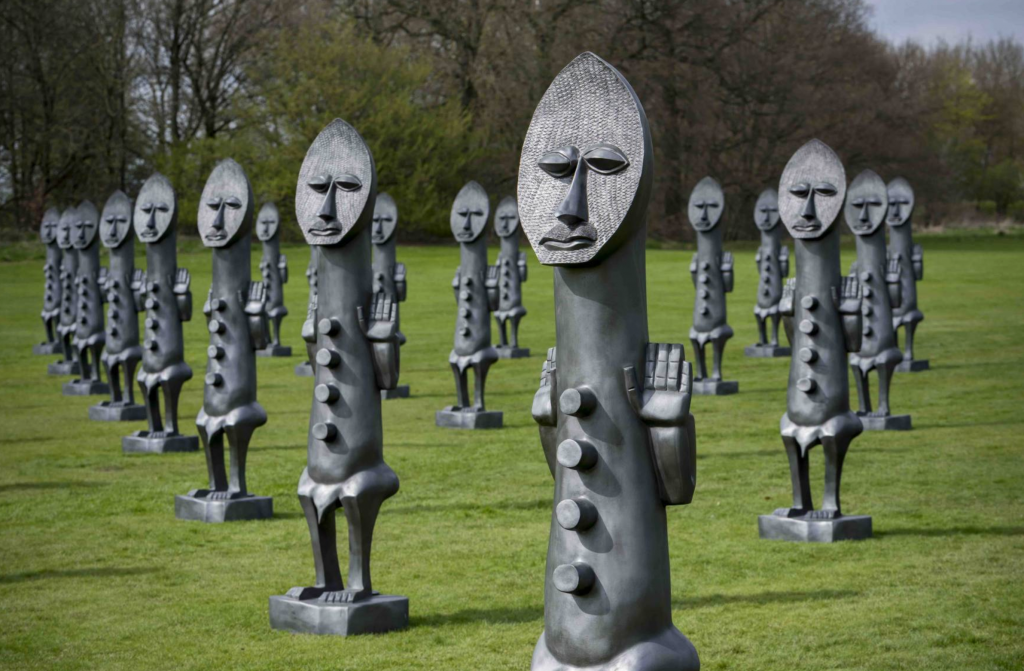
Graphite
86 3/5 × 22 2/5 × 17 7/10 in
220 × 57 × 45 cm

Mixed media including seventies rootsein mannequin, aircraft fuselage, telephone box shelter, metal signage, etc.
98 2/5 × 59 1/10 × 15 7/10 in
250 × 150 × 40 cm
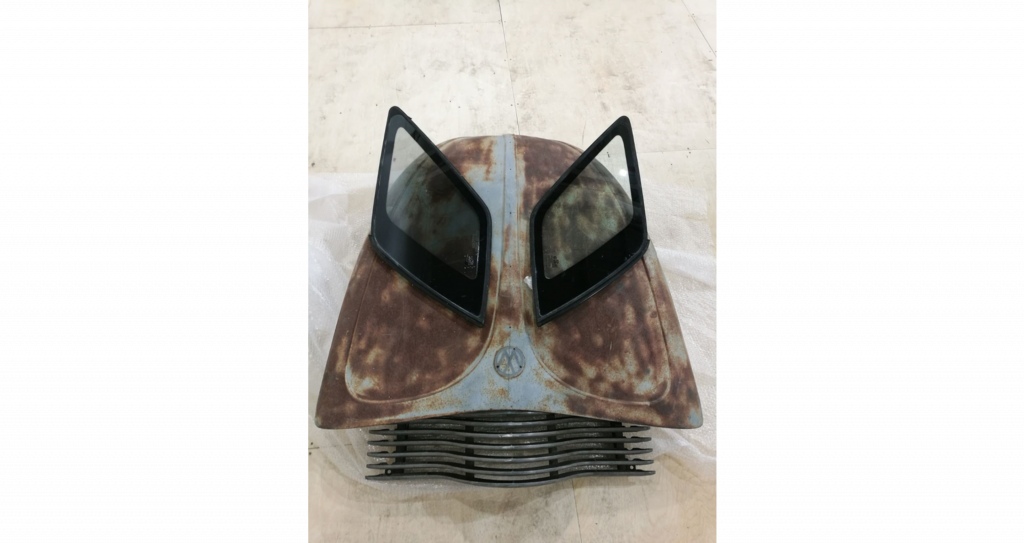
Scrap metal (VW bonnet)
44 1/10 × 41 7/10 × 11 in
112 × 106 × 28 cm
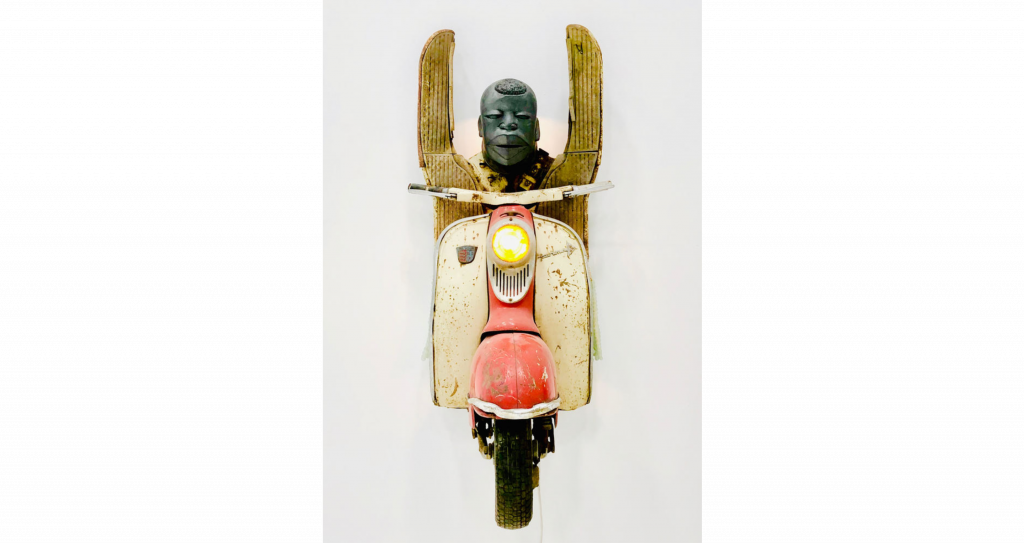
1960s Lambretta scooter, cast graphite, hand made glass African beads, LED lighting and electrical transformer.
55 1/10 × 23 3/5 × 27 3/5 in
140 × 60 × 70 cm
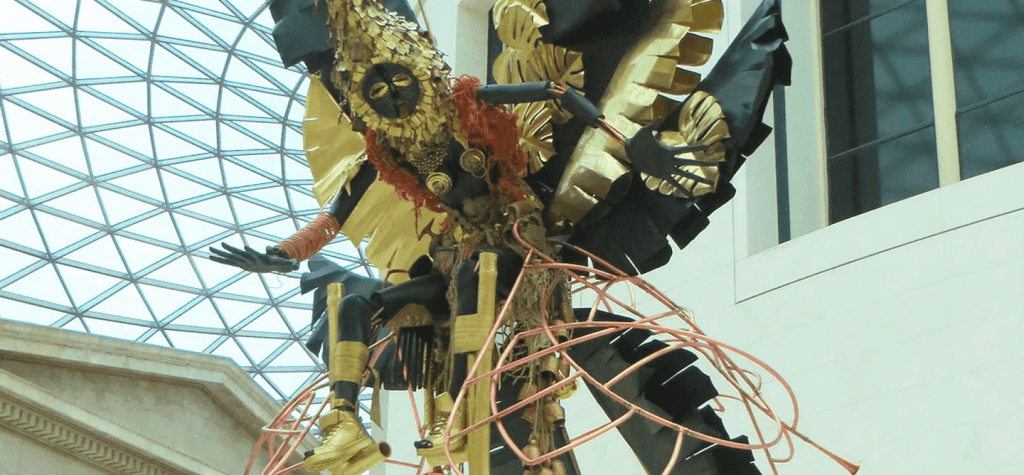
Ové is the first British Caribbean artist to be exhibited in the British Museum’s permanent collection with his commissioned Caribbean Sculpture: Jumbie Figures. These figures emerged as a key feature of carnival in Trinidad in the early 1900s. Oral traditions describe the Moko Jumbie as a guardian of villages who arrived in Trinidad from the West coast of Africa to protect the peoples of the Caribbean from evil forces. Traditionally, Moko Jumbie figures wore long colourful skirts or trousers over their stilts and masks covering their faces.
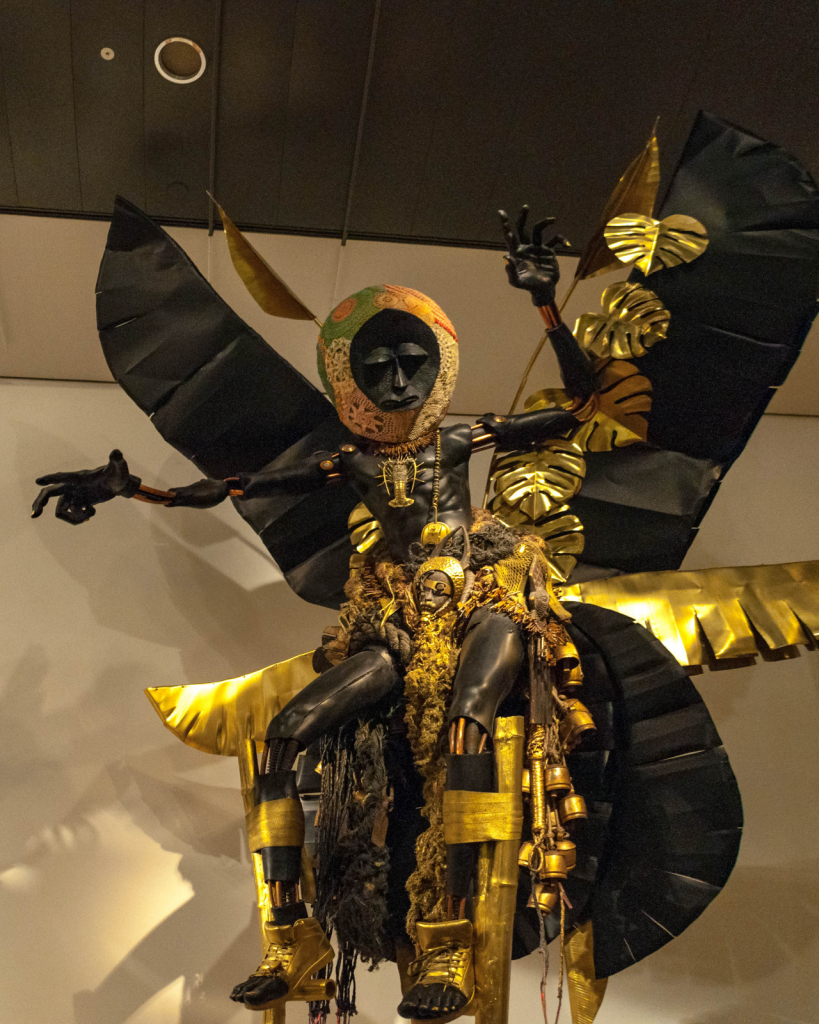

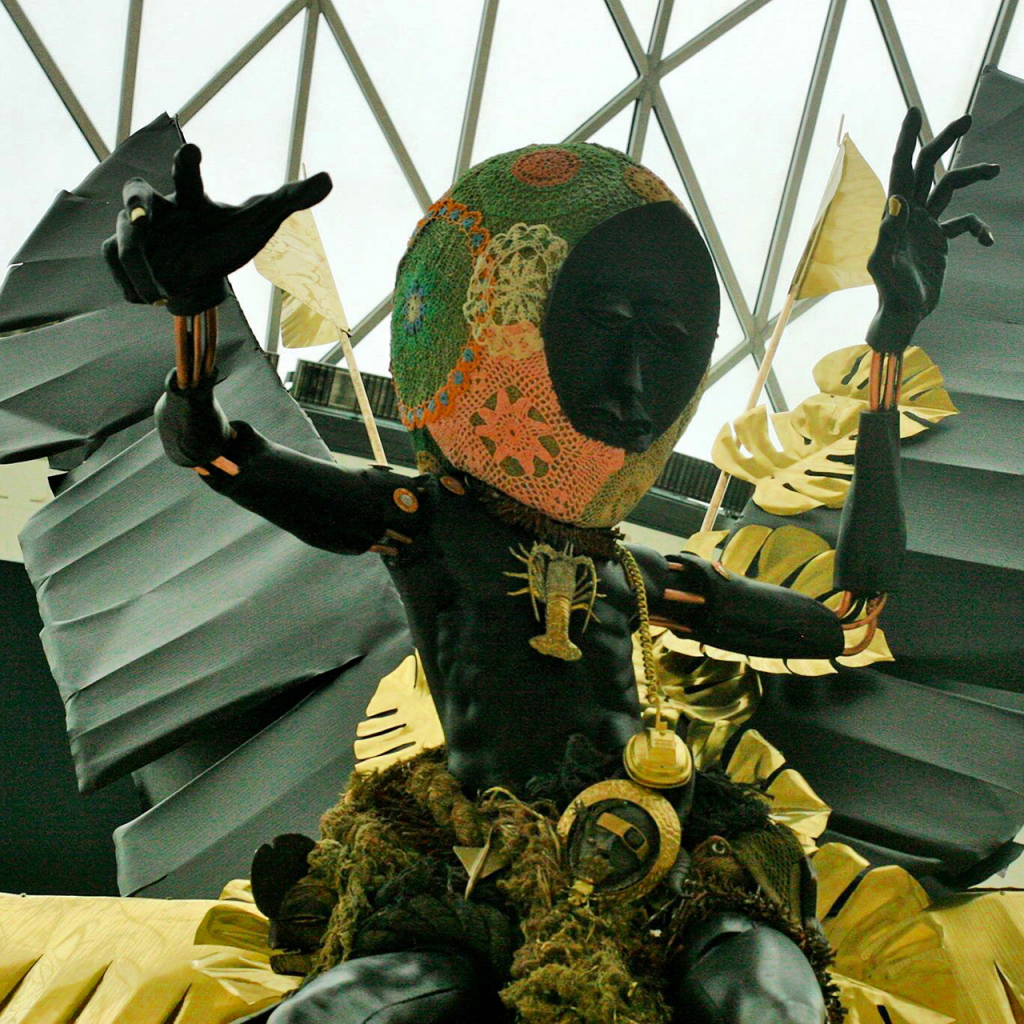
Masking for Africans in the Caribbean was a way to connect to ancestors and nature as well as to ideas of ‘home’. But traditional masquerades were also used to satirically depict their masters and turn a critical eye on plantation society. After full emancipation in 1838, Africans took over the streets at carnival time, using song, dance and masquerade to re-dress the still existing social inequalities.
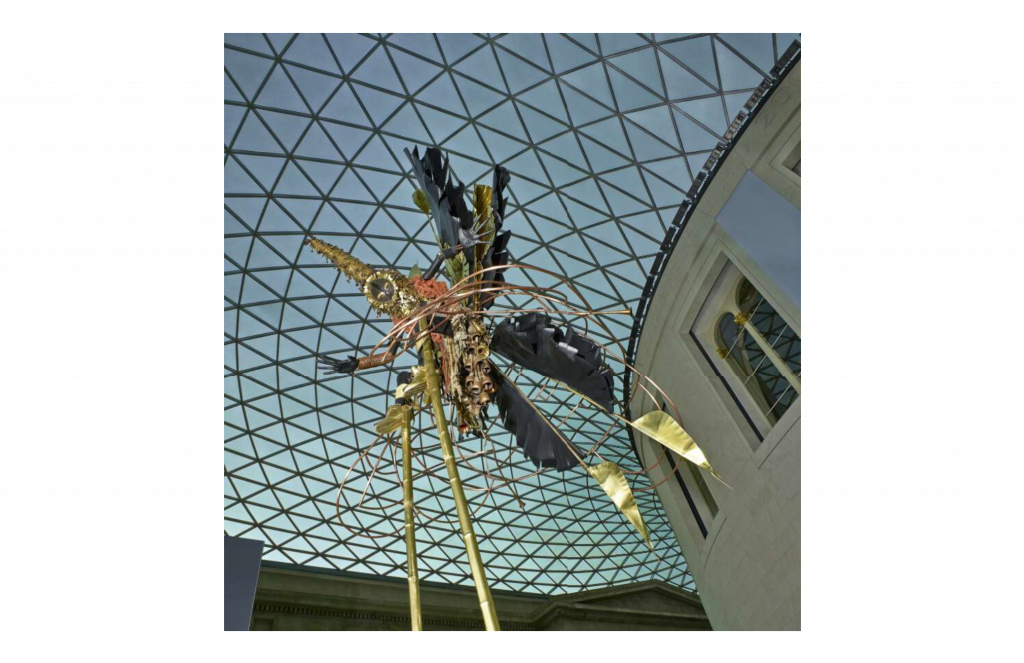
Numerous composite objects attached to figure including wooden masks and comb; metal bells, keys and toy aeroplane; plastic ornaments sprayed gold; textile decorations. Figure wears gold-sprayed leather and synthetic trainers with toes exposed. Wooden mask with attached vertical headdress made of strips of sheet metal sprayed gold with multiple small metal objects attached including keys, figures, chains, and bells. Wings secured to back of figure, sprayed black and gold.
Figure has spiral copper armlet on right proper arm.
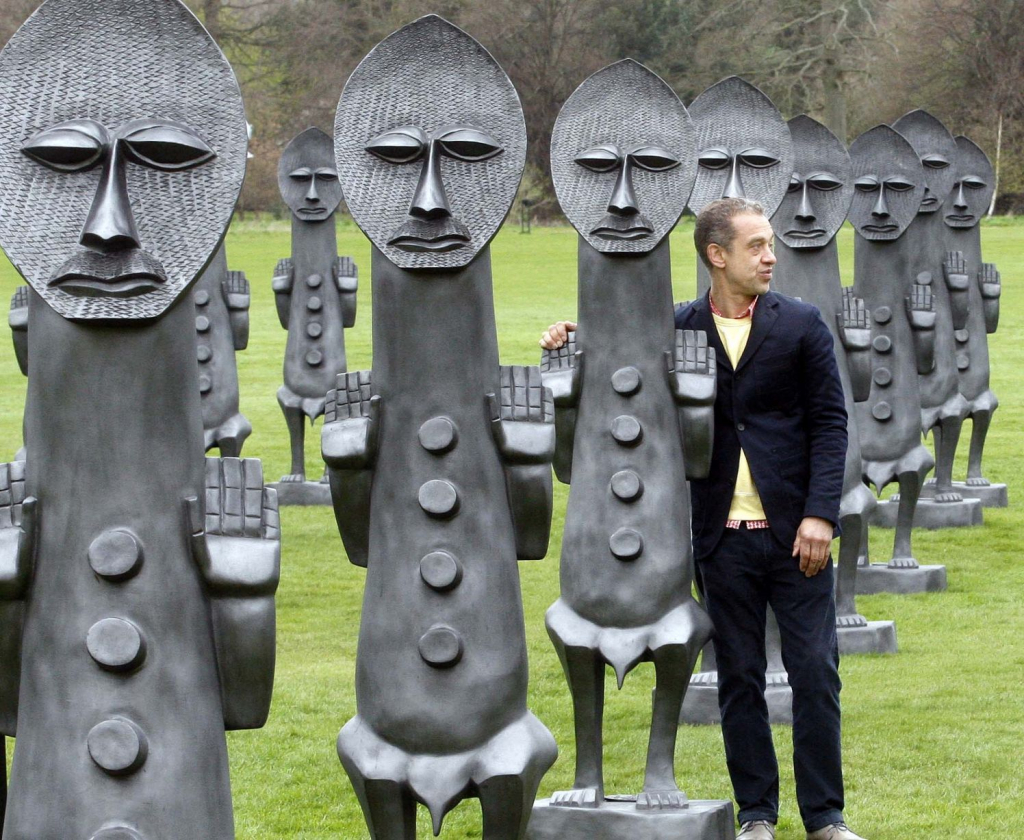
Follow Zak on social media >
You liked this article ? Let us know !
TAG :
#Caribeart #CaribbeanArtist #Caribbean #Caribe #ZakeOve #TrinidadAndTobago #Trinidad #Installation #Sculpture #Trinidadianart #Largescaleart #Statues #Identity #Culture #Study #Diaspora #Realism #Iconography #Culture #People #Art #Artistes #Artist #Digital #Blog #Magazine #Mag #Webmag #New #English #Espanol

